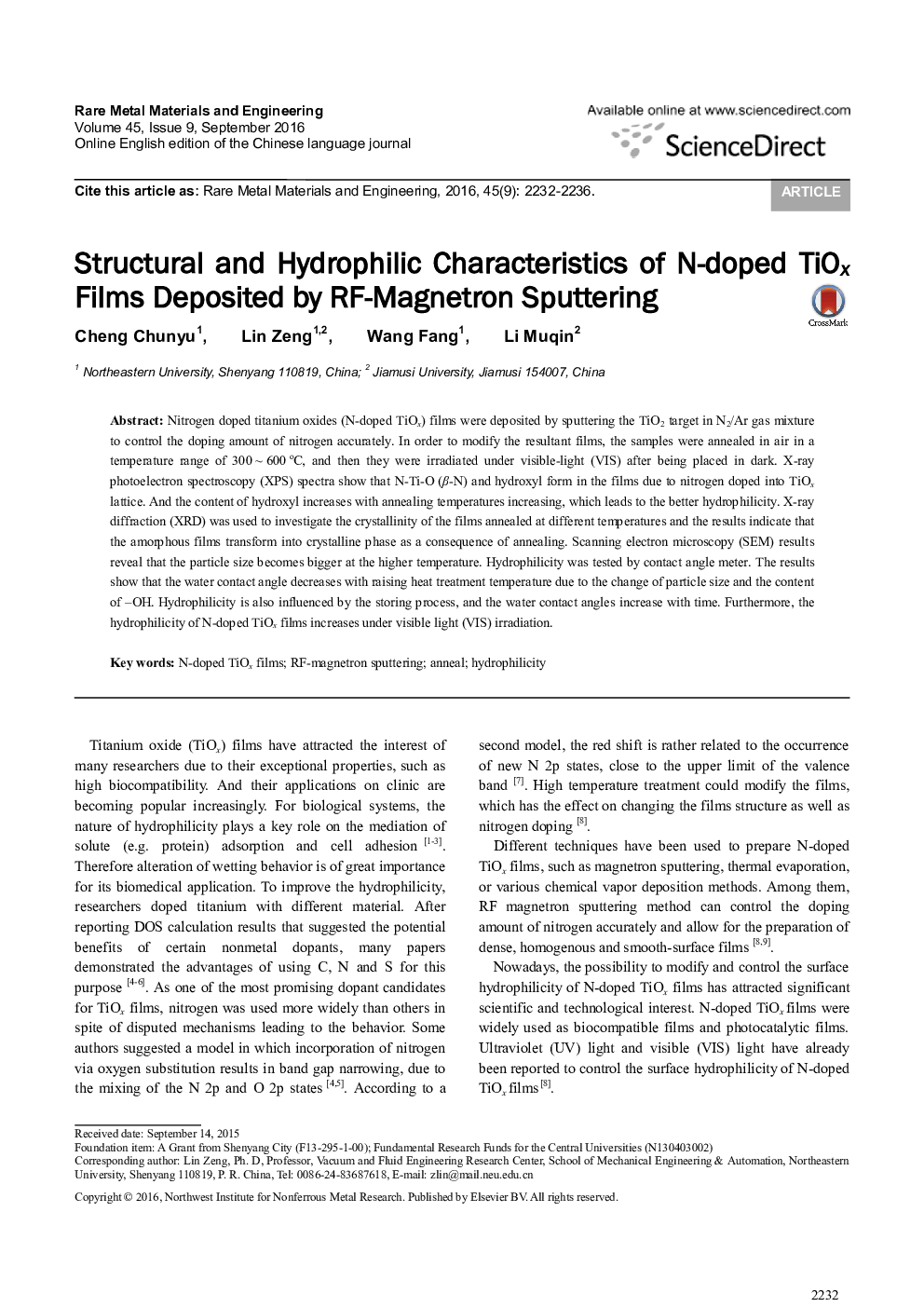| Article ID | Journal | Published Year | Pages | File Type |
|---|---|---|---|---|
| 7210649 | Rare Metal Materials and Engineering | 2016 | 5 Pages |
Abstract
Nitrogen doped titanium oxides (N-doped TiOx) films were deposited by sputtering the TiO2 target in N2/Ar gas mixture to control the doping amount of nitrogen accurately. In order to modify the resultant films, the samples were annealed in air in a temperature range of 300 â¼ 600 °C, and then they were irradiated under visible-light (VIS) after being placed in dark. X-ray photoelectron spectroscopy (XPS) spectra show that N-Ti-O (β-N) and hydroxyl form in the films due to nitrogen doped into TiOx lattice. And the content of hydroxyl increases with annealing temperatures increasing, which leads to the better hydrophilicity. X-ray diffraction (XRD) was used to investigate the crystallinity of the films annealed at different temperatures and the results indicate that the amorphous films transform into crystalline phase as a consequence of annealing. Scanning electron microscopy (SEM) results reveal that the particle size becomes bigger at the higher temperature. Hydrophilicity was tested by contact angle meter. The results show that the water contact angle decreases with raising heat treatment temperature due to the change of particle size and the content of âOH. Hydrophilicity is also influenced by the storing process, and the water contact angles increase with time. Furthermore, the hydrophilicity of N-doped TiOx films increases under visible light (VIS) irradiation.
Related Topics
Physical Sciences and Engineering
Engineering
Mechanics of Materials
Authors
Cheng Chunyu, Lin Zeng, Wang Fang, Li Muqin,
